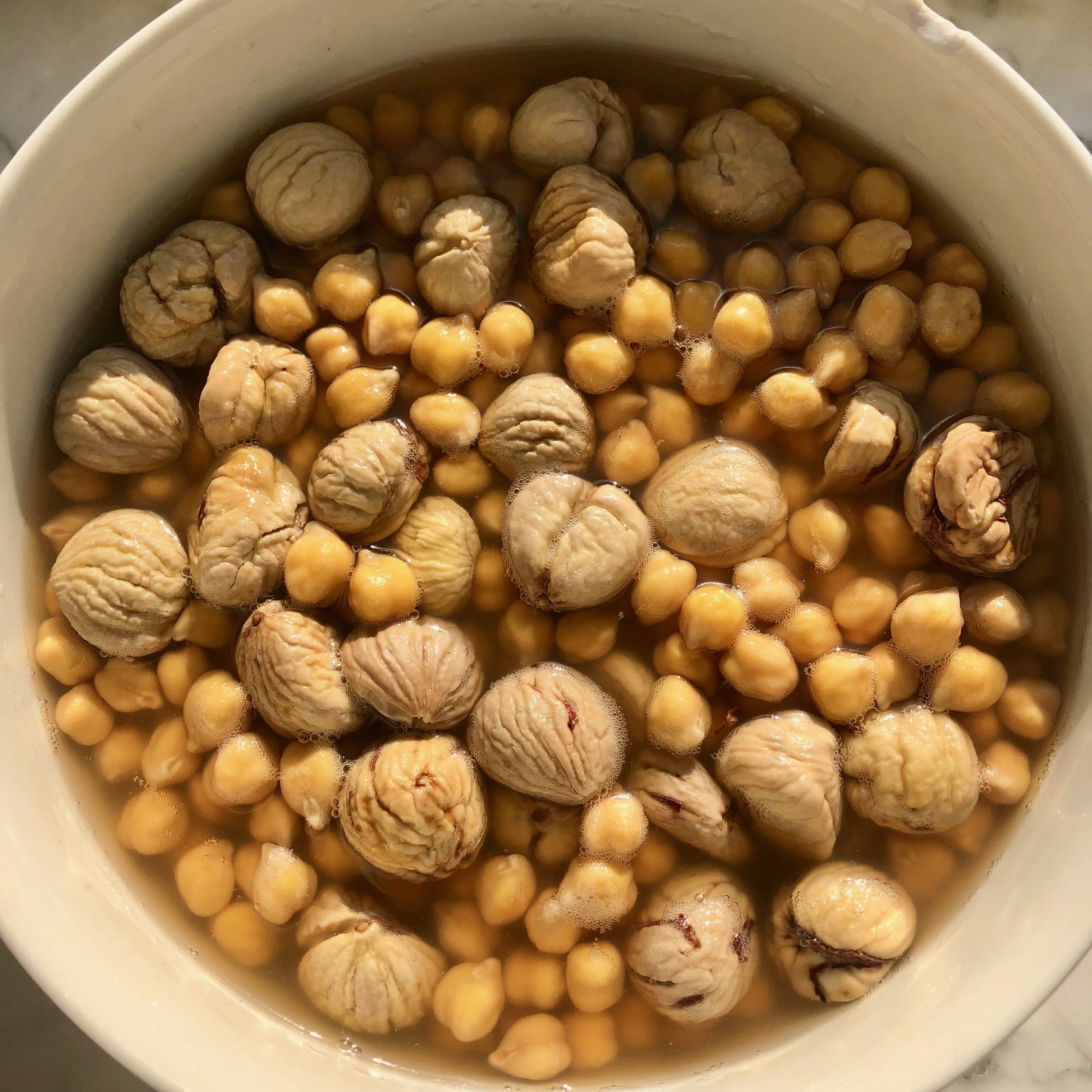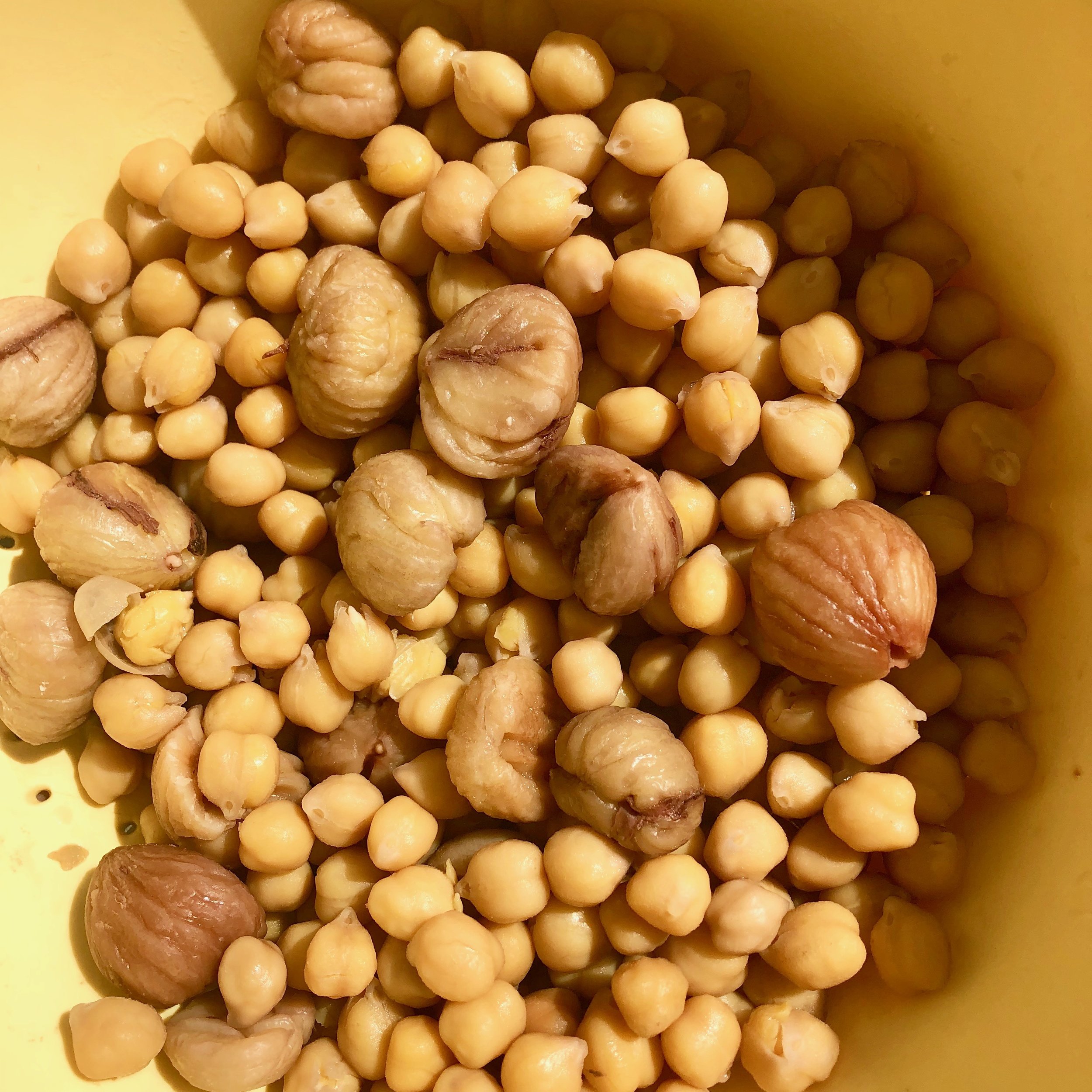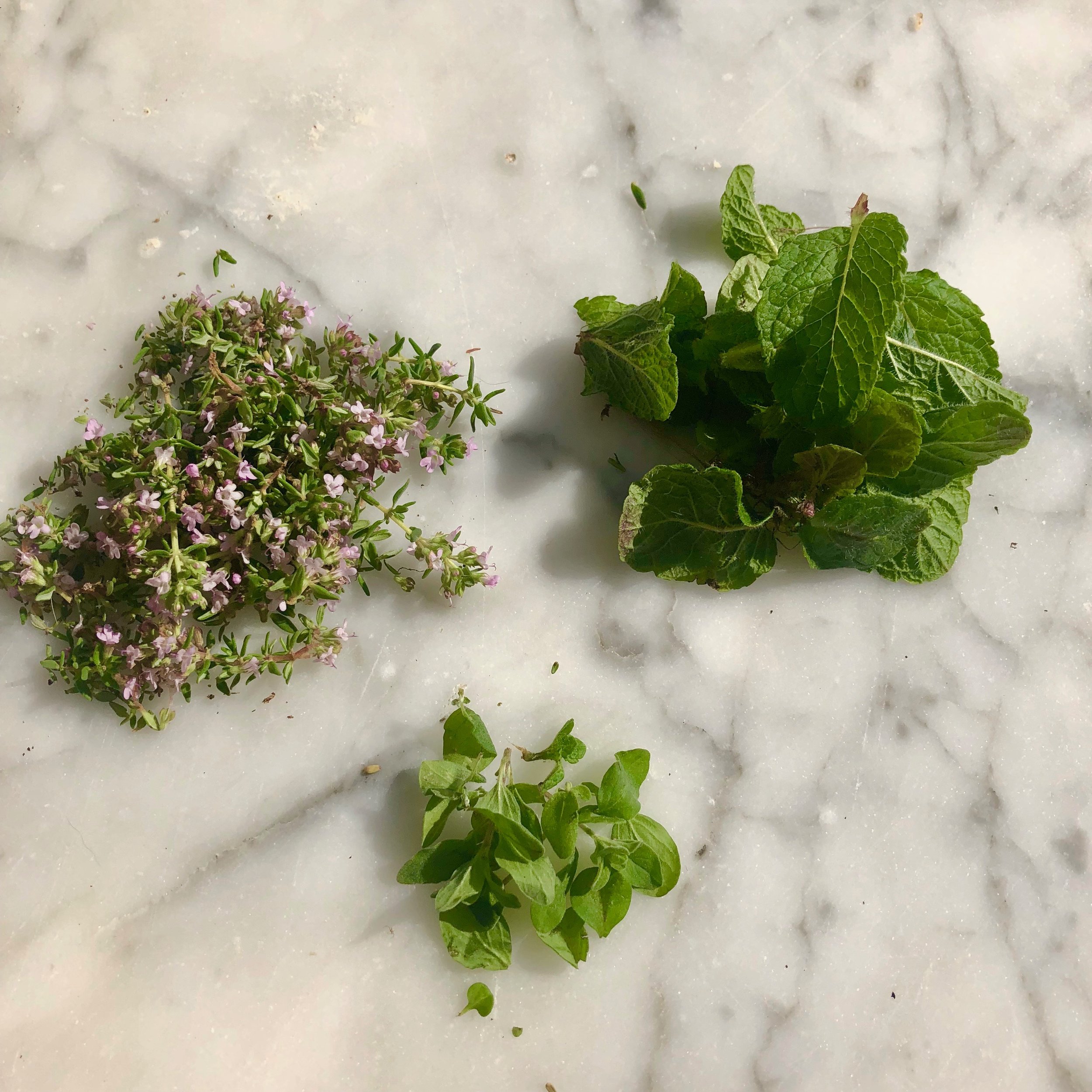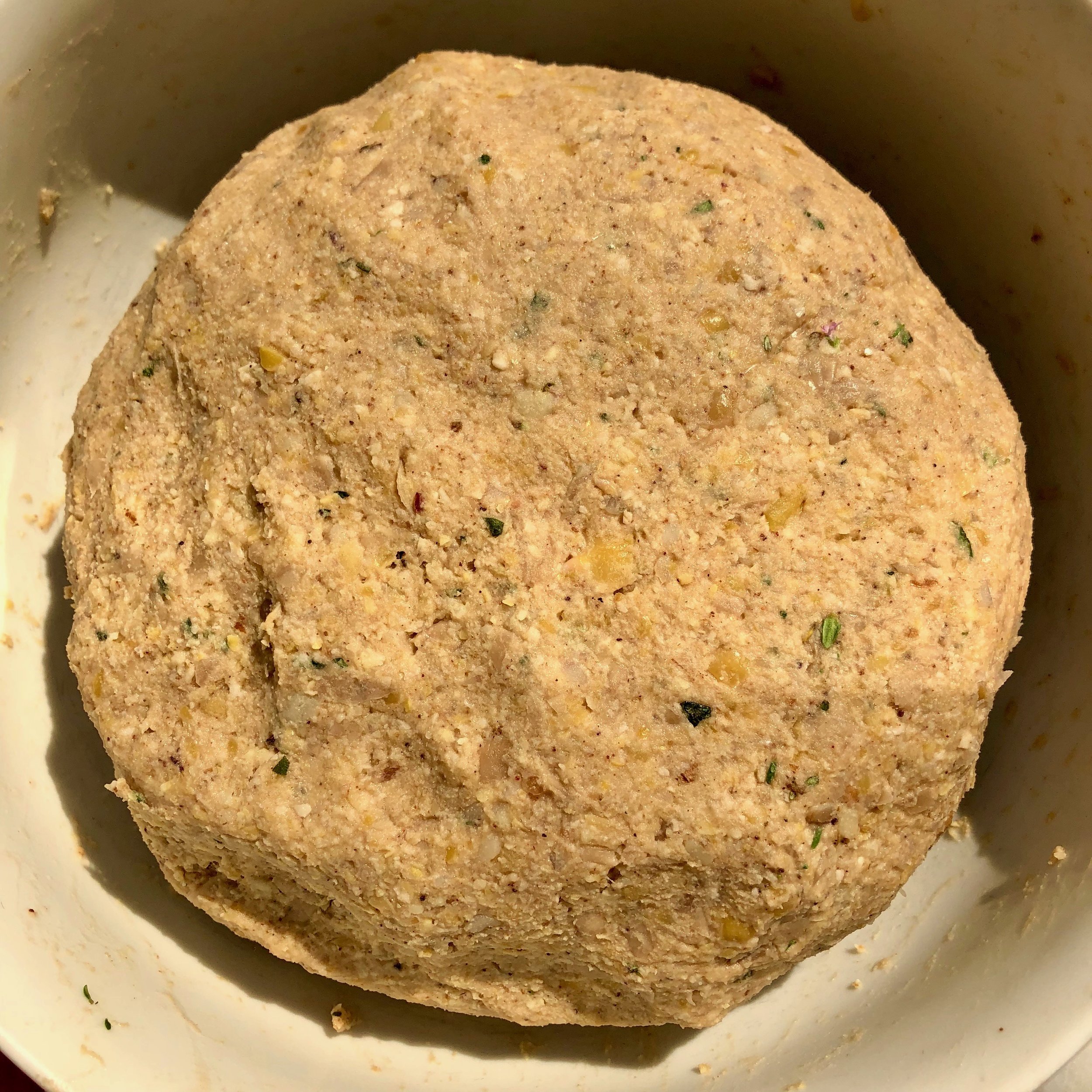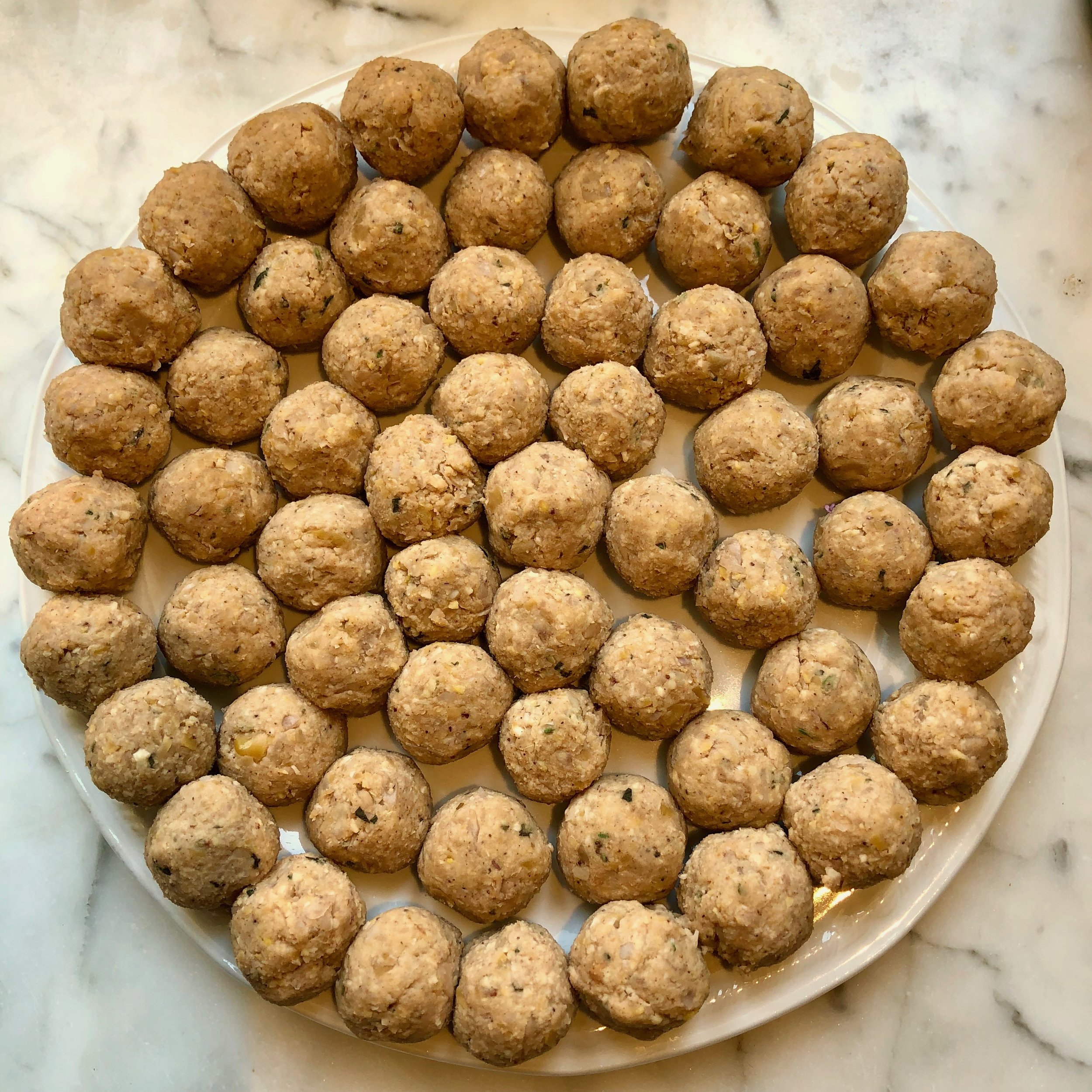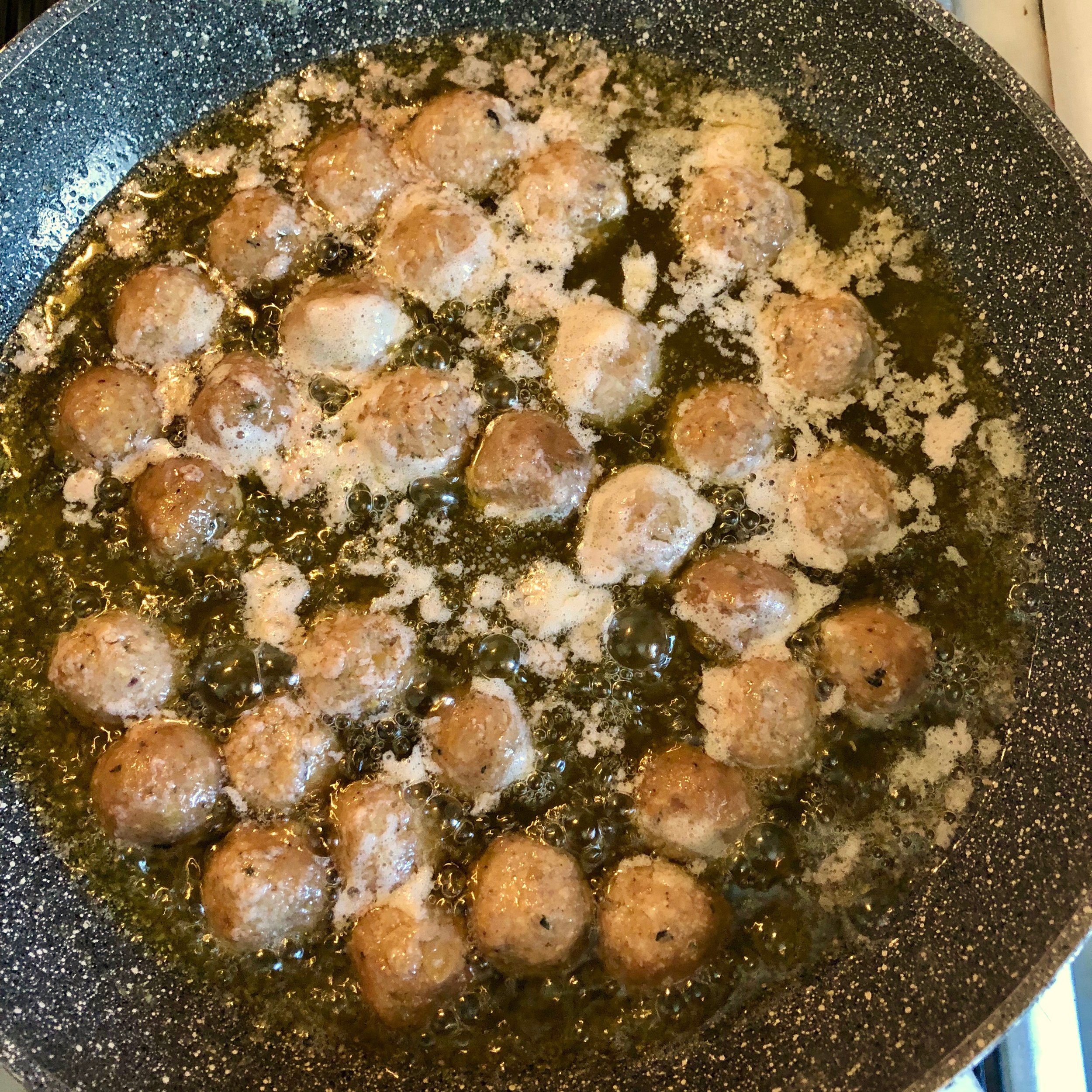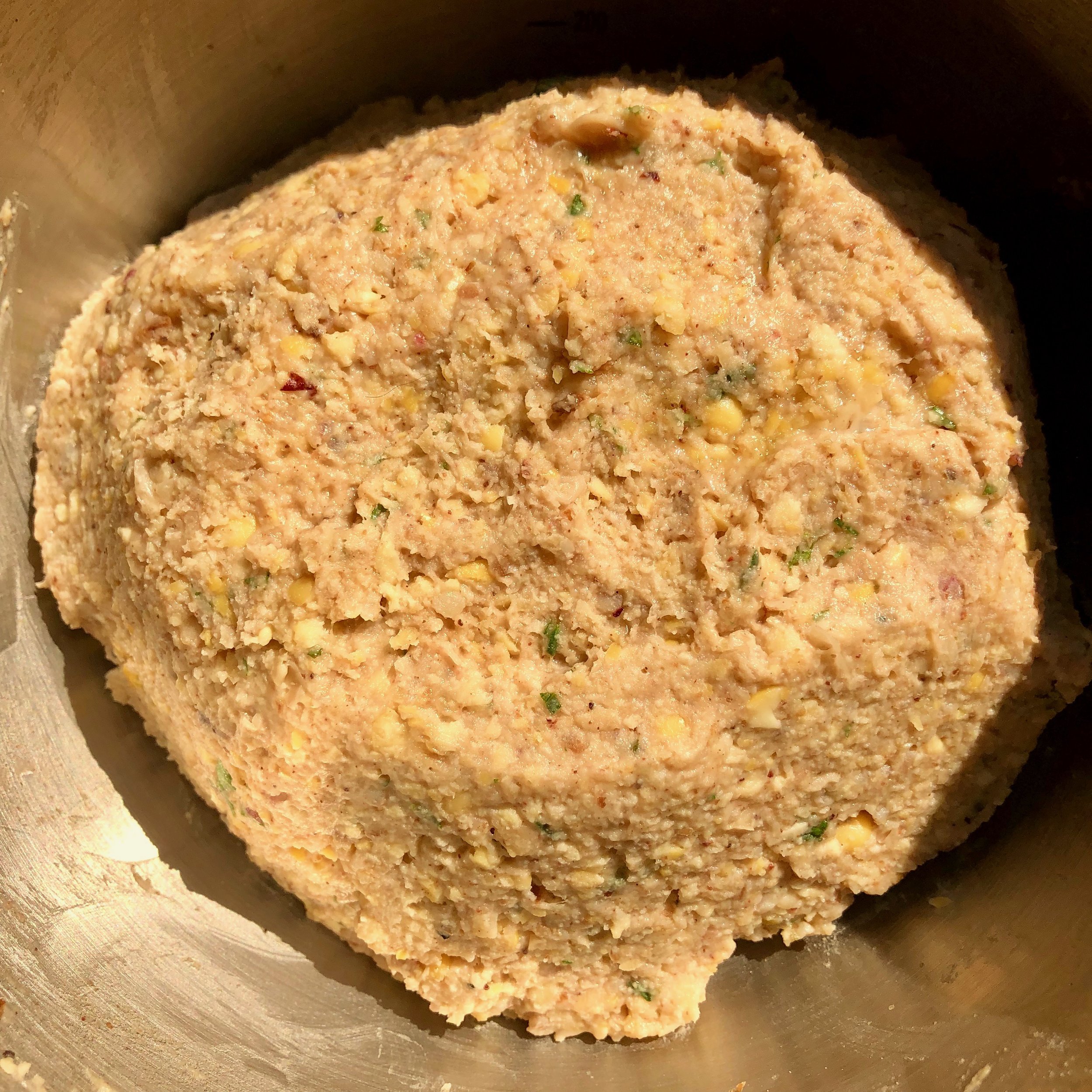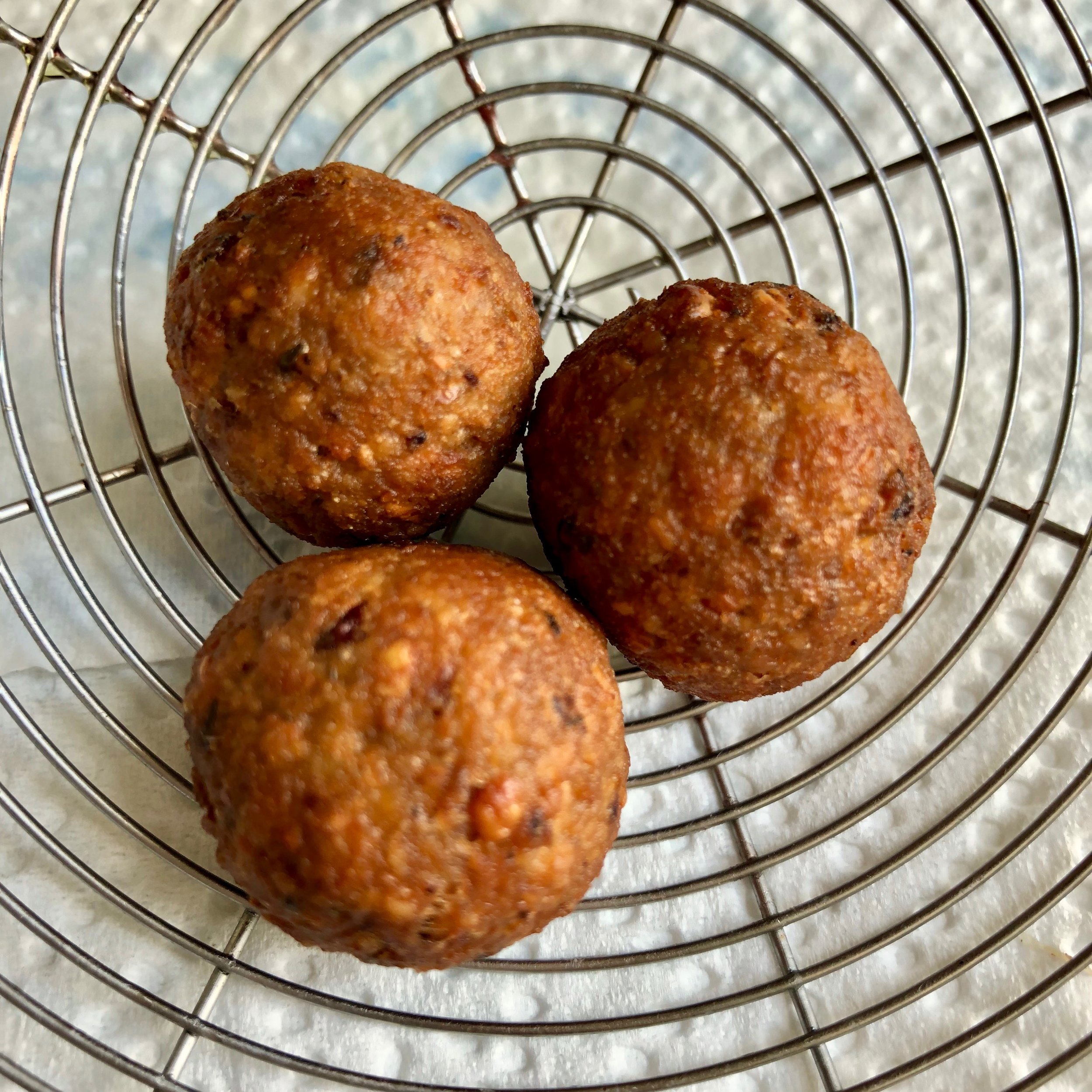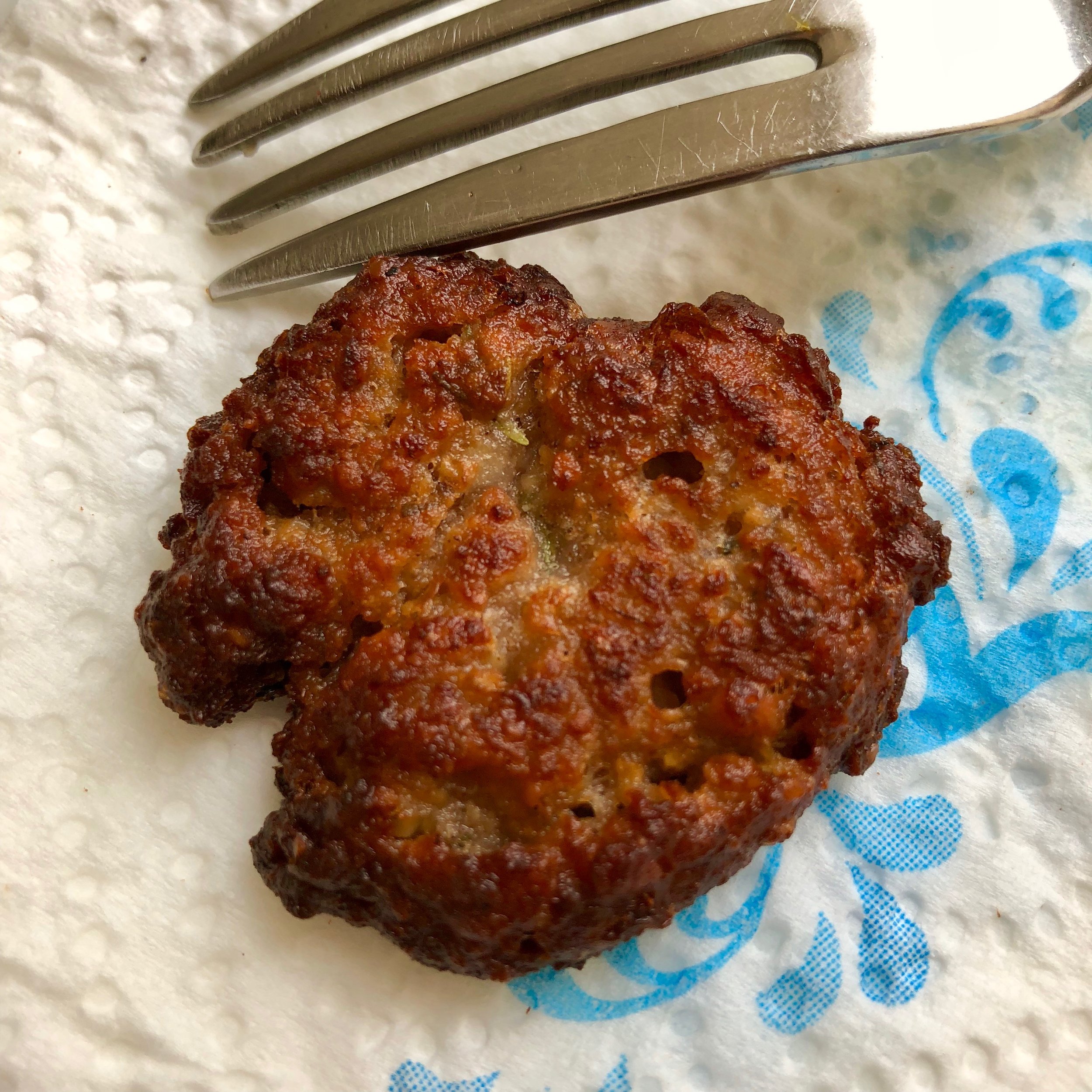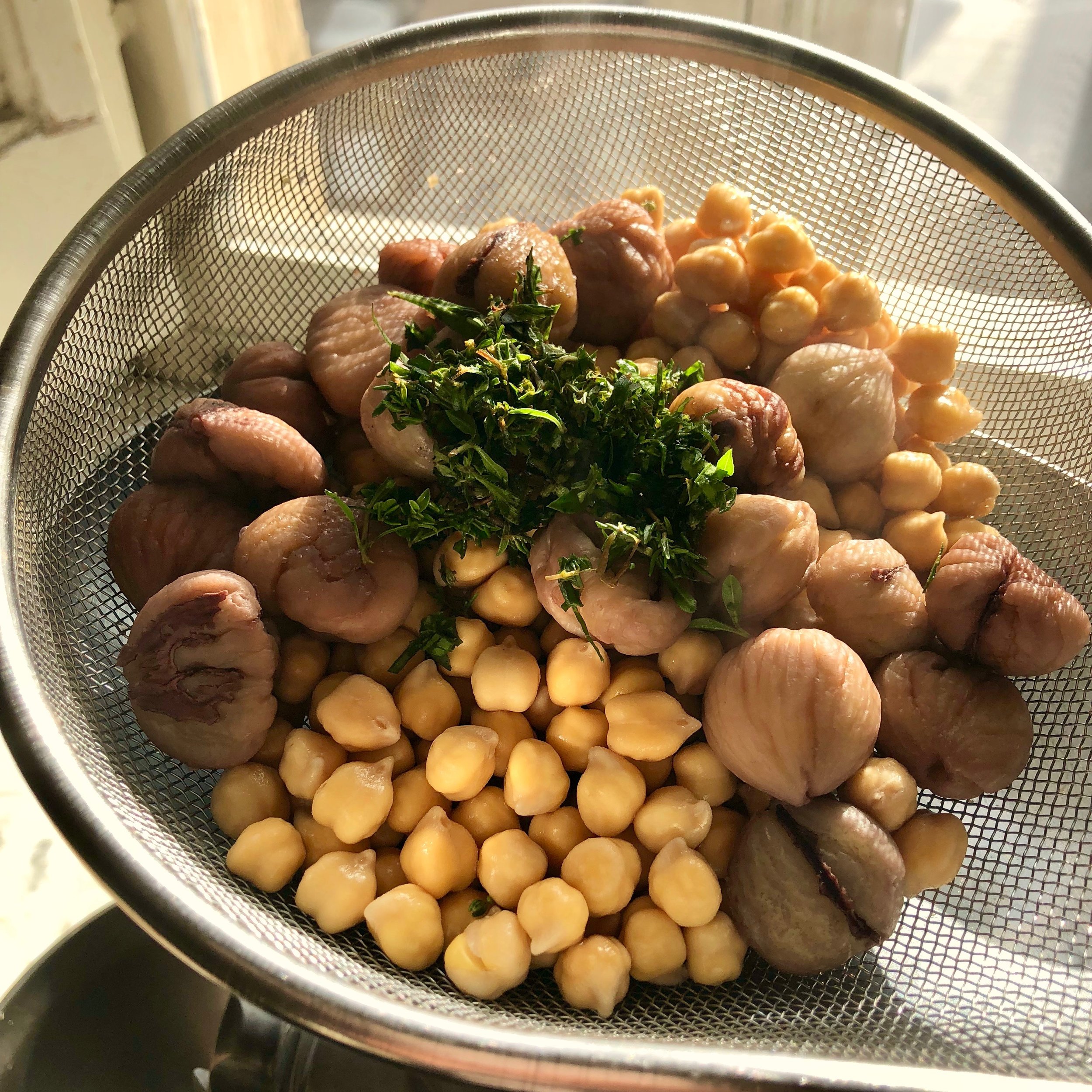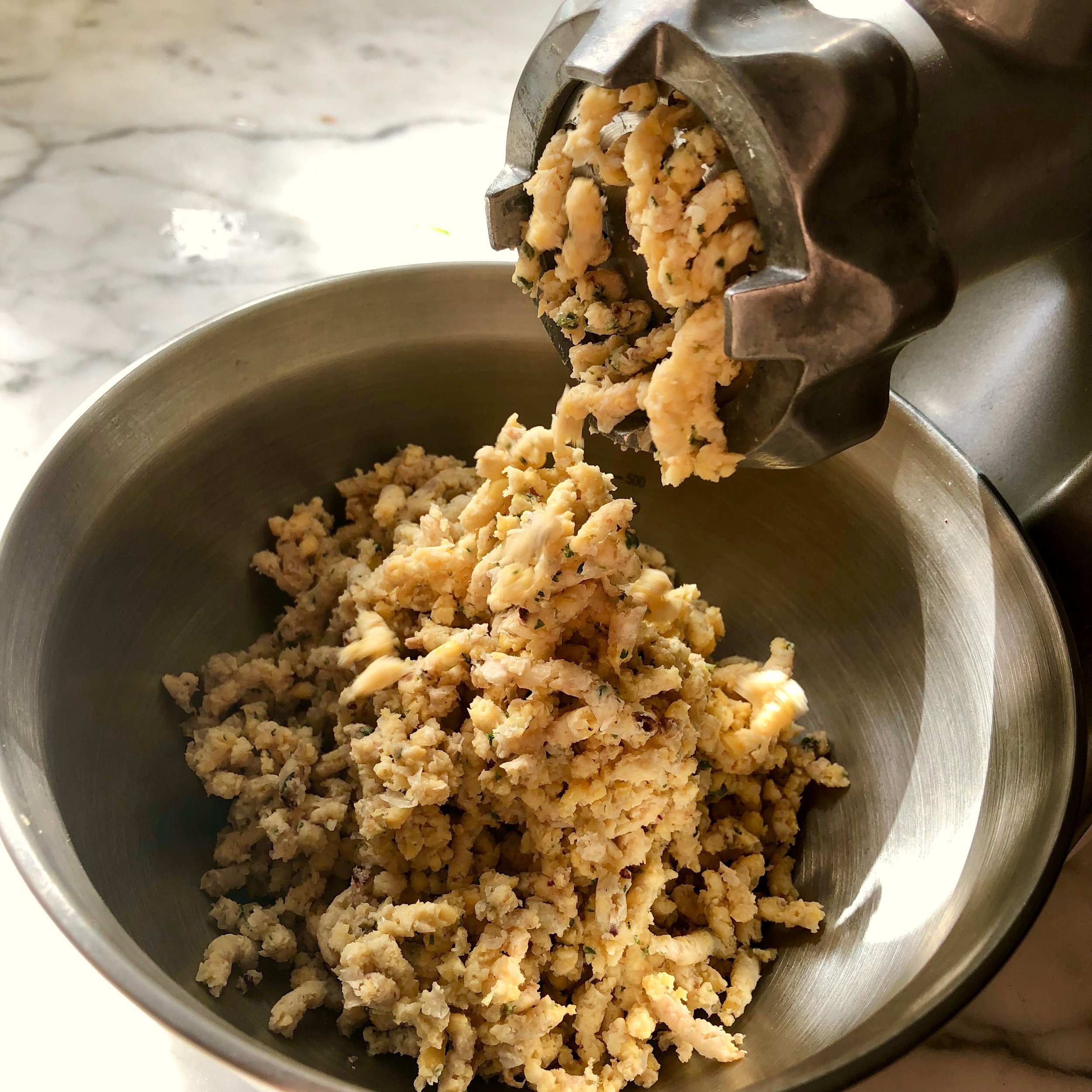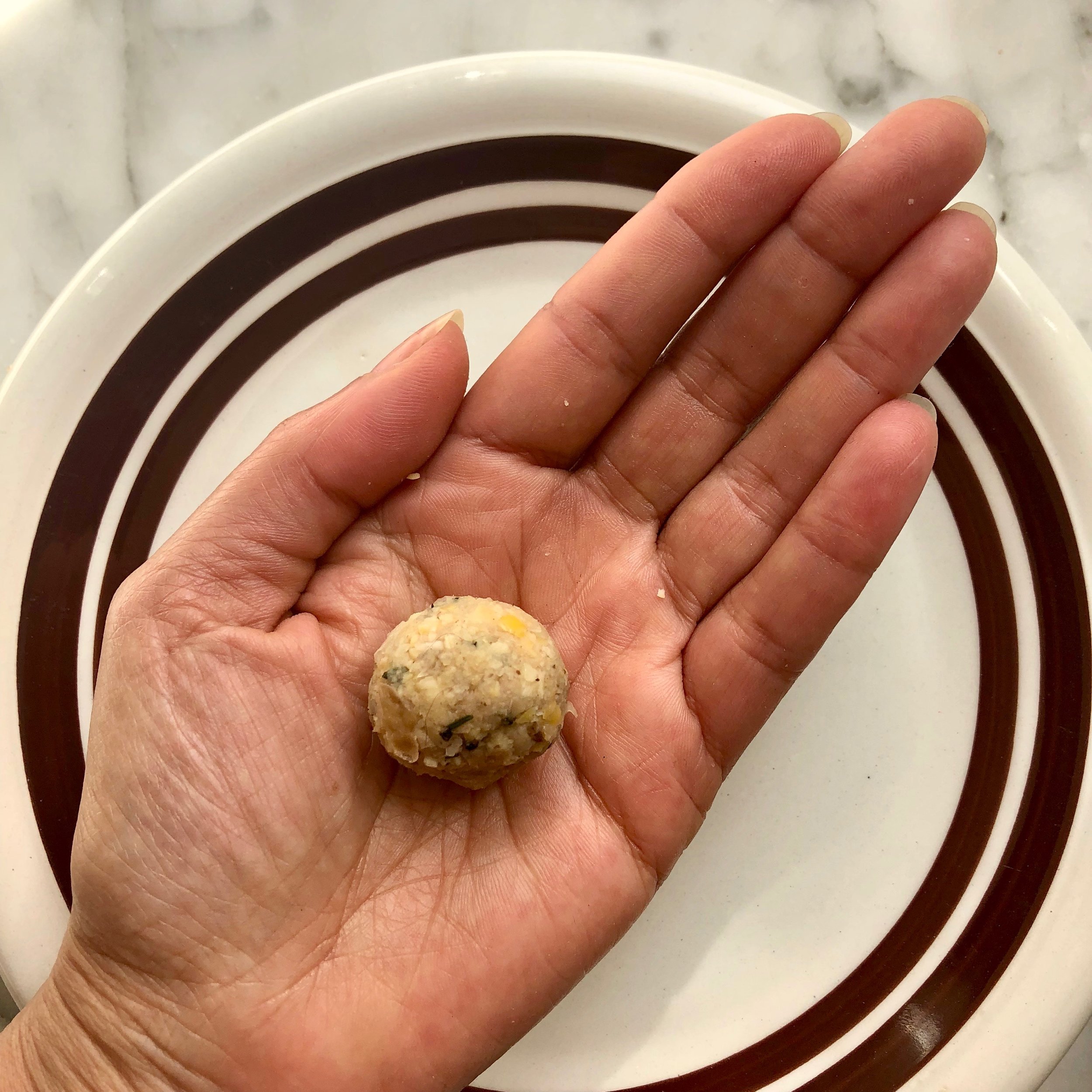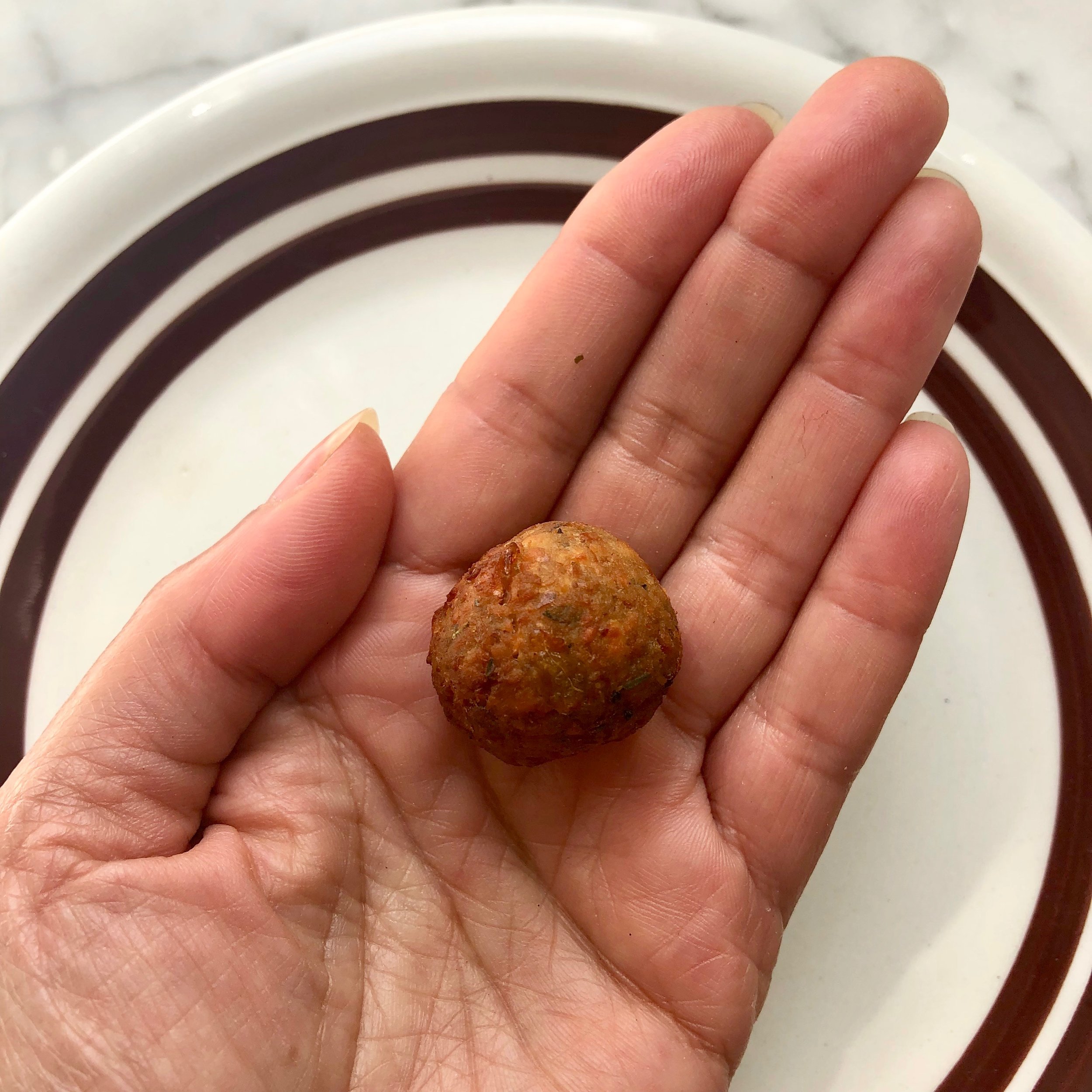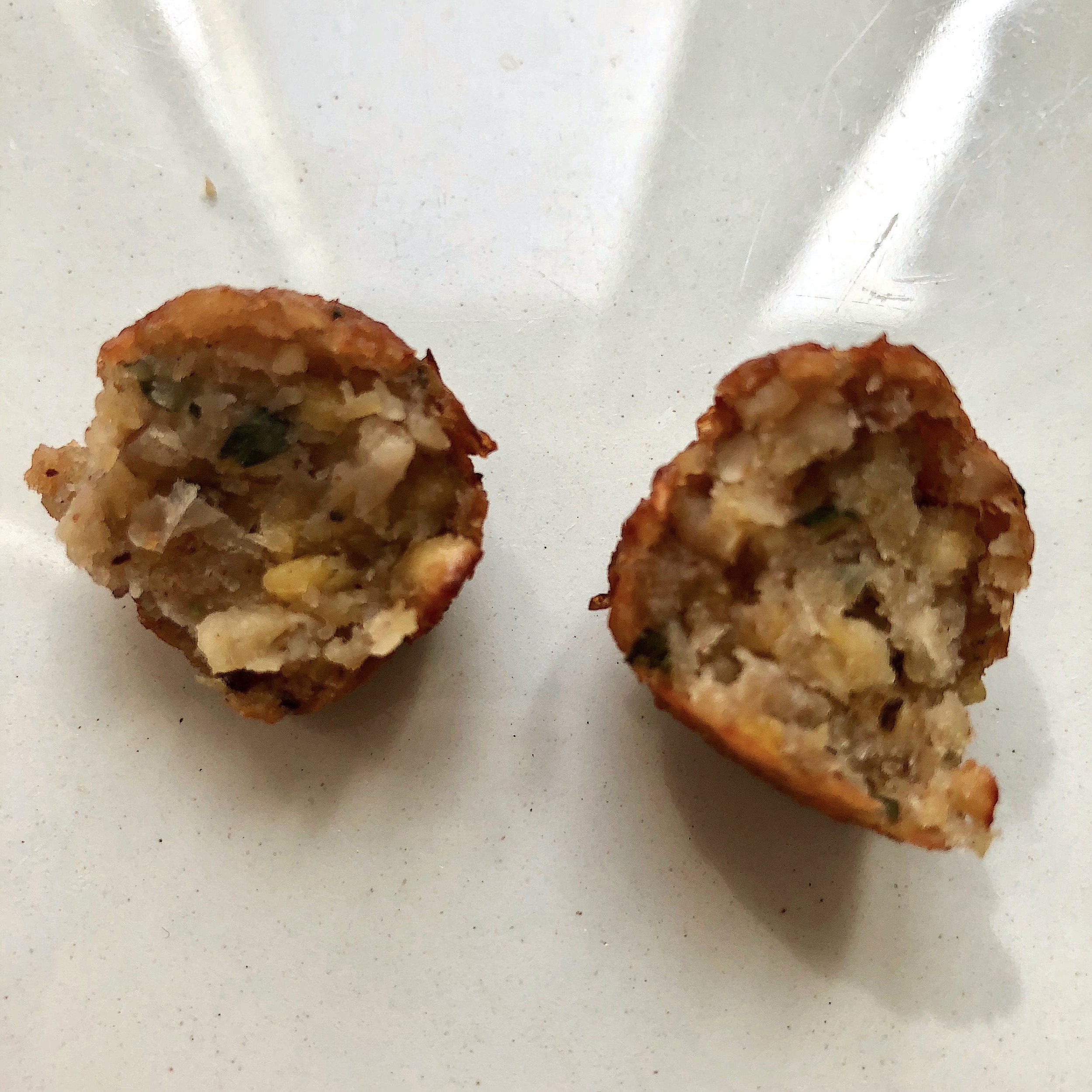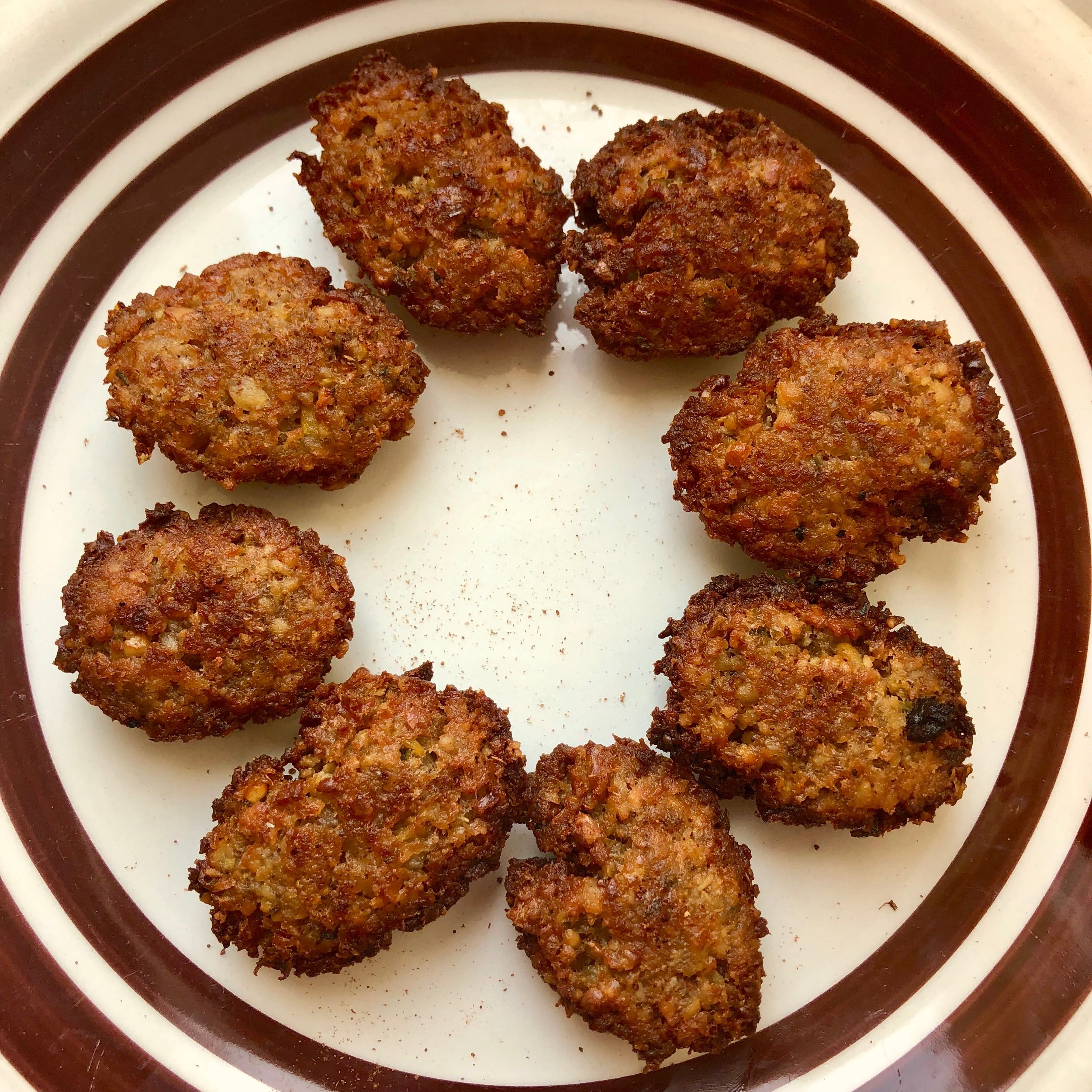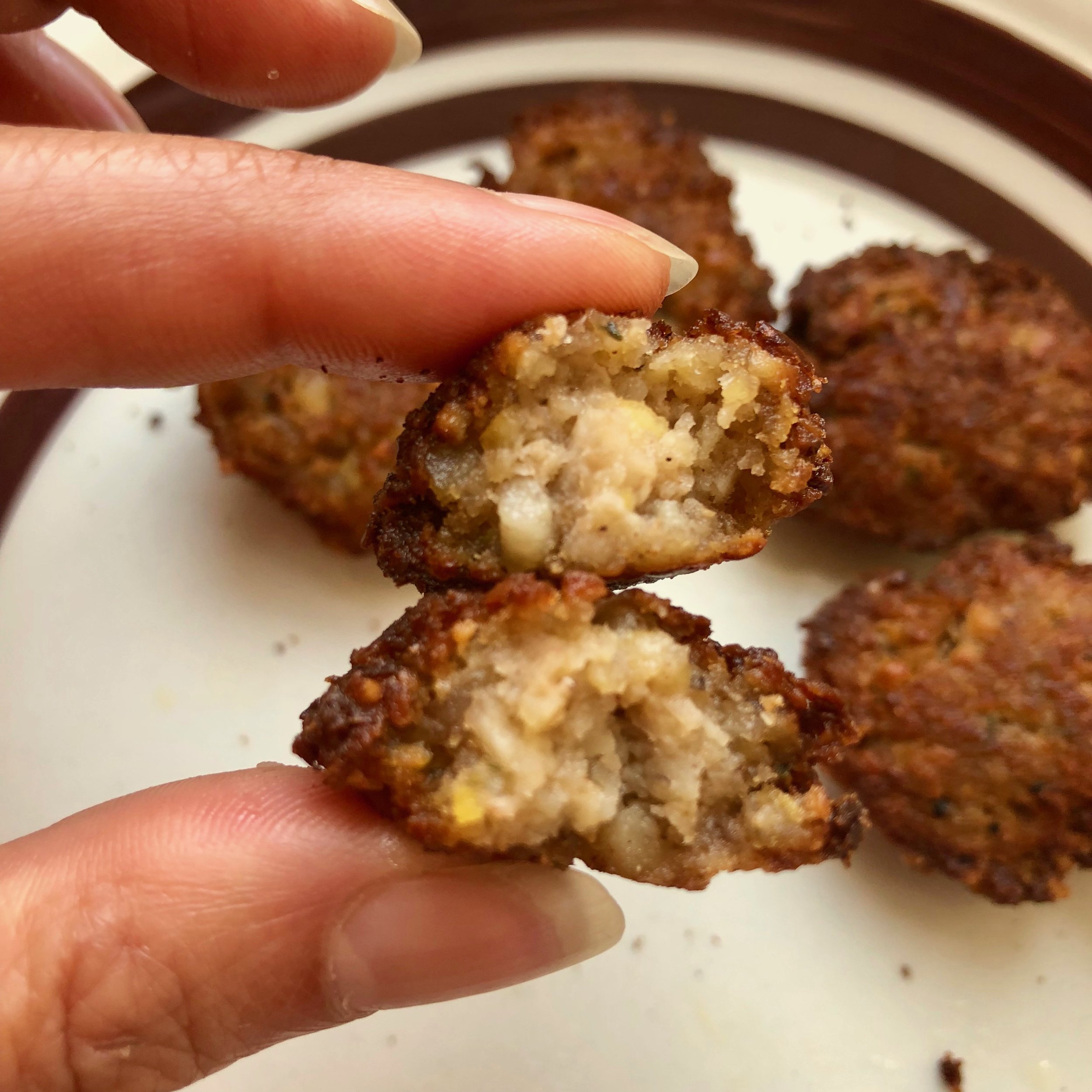Those who cook regularly from cookbooks generally develop a certain sensory literacy, that is, they can read a recipe and connect with how it is going to feel, smell, and taste, just as a musician can hear a written score without playing the music. But with historical recipes, so much is vague, missing, or unknown that it is difficult to grasp the outcome to the degree that one might with a modern recipe. Here is an example of a historical recipe that seemed straightforward enough at the outset, but turned out to be unexpectedly challenging.
Trials and tribulations (emphasis on the latter):
Zeppolle: Fritters made with chickpeas, chestnuts and walnuts. I immediately imagine a tasty high-carbohydrate, deep-fried nugget complimented by the taste and texture of crunchy toasted walnuts. This was going to be good.
Some of you may be familiar with the light cream-filled Neapolitan pastry called zeppole, and rightly so as it was adopted as a Roman tradition and associated with S. Giuseppe, or Father’s Day. But other than the similar name there is little relation between the two.
I started my adventure with Scappi’s version.
Bartolomeo Scappi Opera (1570): Per fare frittelle, dal vulgo Romano dette zeppolle:
To make fritters, commonly called zeppolle by the Romans.
“Take a pound of red chickpeas that have soaked, & remove the peel, & boil them in good meat broth with six ounces of peeled chestnuts, & boil them in the broth, & drain them, and grind them in a mortar with six ounces of walnuts that aren’t rancid, add four ounces of sugar, one ounce of cinnamon, and half an ounce each of cloves and nutmeg, then have ready an ounce of leaven that has been moistened with a glass of tepid white wine, & a little rosewater, & mix everything together, adding mint, marjoram, burnet, and wild thyme, chopped finely with a knife and make balls with this composition, & fry them in rendered lard or butter; & once fried brush them with rosewater and serve them hot with sugar, & cinnamon on top; but if once you have made the composition it is left to rest for an hour covered in a hot place with respect to the leaven, it will be a lot better, & if you don’t have leaven, you can use egg white.”
Trial One
As with all the recipe reconstructions, I work in grams to make the math easier. I refer loosely to the weights Scappi gives and consider them as approximate proportions. (1.1) Therefore, I take a total quantity of chickpeas and half quantity of chestnuts and soak them (1.2) and an equal weight of walnuts. I am skeptical about the chickpeas and chestnuts being cooked together, fearing “mushiness”, but I go along with Scappi. Profiting from modern inventions, I toss them together in a pressure cooker, stopping when they are just barely soft (1.3) and then I grind them in a food processor. The resulting mixture is dryish because I had left them on the al dente side because, taking my cues from the chickpeas, I am thinking “falafel.”
I add the rest of the ingredients except for the burnet, (https://www.thespruce.com/growing-and-using-the-herb-salad-burnet-1402607) because I cannot procure it (1.4).
In the place of the leavening I decide to use my own starter, and dutifully mix it with some wine and rosewater as written (1.5). My instincts flare at the thought of the wine, rosewater, starter cocktail, but I forge ahead. As these are fritters, I am thinking that there should be a good quantity of leavening so that they will puff up. I decide to be bold and go for 100g of starter. I then formed the lot of it into a mass (1.6) and let it sit for an hour because Scappi assures me that I will get the best results that way. I go out for my run to keep myself from checking on it every five minutes, and then when I get home I make the balls (1.7). Each one is carefully weighed out to 12-14g.
Maestro Scappi says to fry them in rendered lard or butter. Regardless of my knowledge about the latest studies on fat, and my advocacy of eating absolutely everything in moderation whenever possible, I cannot bring myself to deep fry in lard. Ok, I did it once with Roman meatballs; we’ll discuss that another day. I go for the butter option. If I am going to sin, I feel more justified blaming it on the temptation of butter than lard. Butter makes everything better. There seemed fewer margins for error. If they were going to end up greasy and fat laden, I preferred it be with butter. So that I can maintain a higher heat without damaging the butter, I add one quarter olive oil (1.8) to the butter. I proceed to fry.
My glee and excitement very quickly turns to dismay and then utter despair as I watch the first batch of meticulously formed 12-14g balls disintegrate into the hot butter. I turn the heat off under the brown mass and pause to collect myself.
Fortunately, there are still some balls left, so once I’ve recovered, I heat a shallow pool of olive oil in a small skillet for the second go. This method is more clement, and although the balls lose their spherical perfection, I am assuaged by Terrance Scully’s translation note reminding me that zeppa means wedge (thus, zeppolle could be translated “wedgies”). These are indeed wedge shaped, so perhaps that is what they are supposed to look like (1.9). As instructed, I sprinkle on some rosewater, sugar, and cinnamon. They are mushy inside and I feel certain that despite the remove in time, this would have been an unacceptable texture.
I set up more chickpeas and chestnuts to soak for the next day.
Trial Two
In this second trial, I take a tip from what I know about Jerusalem-style falafel. The best texture comes grinding the raw soaked chickpeas in a meat grinder, an appliance I have because when time allows, I prefer grinding meat myself. This time, I pressure cook only the chestnuts and leave the chickpeas raw. I also decide to swap out the marjoram for savory because marjoram dominated a bit too much. The rest remains the same (2.0). I form only a few balls and fry them in oil having given up on the butter but alas, uncomfortable using lard. They fry beautifully, maintain their spherical shape but are still unappetizingly mushy inside (2.1). Out of desperation, I add enough liquid so that it is almost the consistency of a batter. Using a small spoon, I drop blobs into the hot oil. The taste and texture improve considerably, but I feel unconvinced that this is what the recipe was trying to achieve (2.2).
Trial Three
Three days pass before I can bring myself to try again. I take a closer look at the recipe for Cepolle by Domenico Romoli. He is Florentine but operated out of Rome at the beginning of the 16th century. His cookbook was published posthumously in 1660, ten years before Scappi’s. He was a scalco, a steward, a higher position than the household chef. His recipes are less refined and elegant than Scappi’s, and I have to wonder whether or not there was a bit of one-upmanship going on between chefs and the stewards which led Scappi to produce such a monumental work. But as Scappi’s zeppolle were not working out for me, my hope was that Romoli’s cepolle will resolve some of my queries.
Domenico Romoli (1560): Cepolle di ceci rossi
“Take one pound of red chickpeas, one pound of peeled dried chestnuts & half a pound of walnuts. The chickpeas will have to be peeled one by one, and it is best that the chestnuts are well cooked, then the whole thing has to be well pounded, & shell the walnuts removing their skin & crush them without cooking them, then take some marjoram, roman mint, and other aromatic herbs, & mince them all & put the whole thing together with a half pound of sugar, half ounce of cinnamon, & a pinch of cloves and pepper, all ground.
Take a bit of leaven (although in the hot season there is no need for leaven) & dissolve it in a glass of water of a glass of good white wine that is not too sweet. You need to mix all these things together the evening for the morning being careful that the composition is neither too stiff nor too liquid, then with a small spoon put them in the pan so that they come out round, in good hot oil on the fire, & they need to be turned a lot so that they brown, and then take them out, & have some honey melted in a pan & turn them over in it so that they soak it in, put them on a plate and top with sugar, & cinnamon, and to make them pungent, you can put a few nettle top sprigs.”
As I am loathe to bin too much more food, I reduce the quantities by half for the next round(3.0). Romoli uses the same weight of chestnuts as chickpeas, and I don’t want to go there because I am convinced that the mushiness is largely due to them. I use the fact that he never explicitly says to cook the chickpeas, only the chestnuts, as an indication that my falafel theory may have been right. I only barely cook the chestnuts and proceed with the grinding (3.1). I do concede to abandoning the poetry of the sourdough starter for the more prosaic dry active yeast.
There seems to be a typo at a crucial point where Romoli appears to be saying that the mixture should rise overnight and be made the next day, so I increase the rise time from 1 to 6 hours. Sure enough, after six hours they are actually rather fluffy. Although I cringe at the thought of squishing the airiness out, I again form balls (3.2), fry them in olive oil, and they look lovely (3.3). But instead of being mushy, the interior is rather uncooked (3.4). The high sugar content makes them brown quickly despite the moderate temperature, and this does not bode well for my choice to keep them on the grainy side. They need to resist longer in the boiling oil. Sigh.
I take another tip from Romoli who says to form the balls using a spoon; so I form small shapes similar to quenelles. Ah, finally, these come out crispy without being too compact (3.5). The interior is cooked and the texture is something akin to falafel. I do not want to use my modern palate as a measuring stick for the correct execution of a recipe, but as I managed to respect the integrity of the instructions, and maintained the specified flavors to a good degree, I would venture to say that my version of it above may get us near what was experienced in the 16th century as what the Romans would call zeppolle.
Zeppolle, Cepolle, Fritelle
200g chickpeas
100g dried chestnuts
1 tbsp dressh savory, mint and thyme
100g shelled walnuts
½ tsp cloves
½ tsp pepper
1 tsp cinnamon
¼ tsp dry active yeast
1 tsp salt
2 tbsp sugar
¼ cup white wine
2 tbsp of rosewater
Olive oil
Cinnamon, sugar and honey for topping
Directions
Take 200g chickpeas and 100g dried chestnuts. Leave to soak overnight.
In the morning separate out the chestnuts and boil them for half an hour until they just begin to soften.
Mince 1 tablespoon of fresh savory, mint, and thyme.
Grind the drained chickpeas, chestnuts and herbs in a meat grinder.
Take 100g shelled walnuts and reduce them almost to a coarse flour in a small processor.
Mix with the walnuts, and add ½ tsp each of cloves and pepper, and one tsp of cinnamon, with ¼ tsp of dry active yeast, 1 tsp salt and 2 tbsp sugar.
Mix it all together and add ¼ cup of white wine and 2tbsp of rosewater to create a batter that is moist and barely holds its shape, but is not too liquid.
Leave it for 5 hours or more depending on the temperature of your house.
Heat olive oil to 145°C and with a spoon form small mounds that will be pushed off carefully into the hot oil.
Work in batches turning the fritters once they have browned on one side. They should be a dark golden brown, but not dark brown.
Remove and top with cinnamon sugar. Drizzle with a thread of honey.






